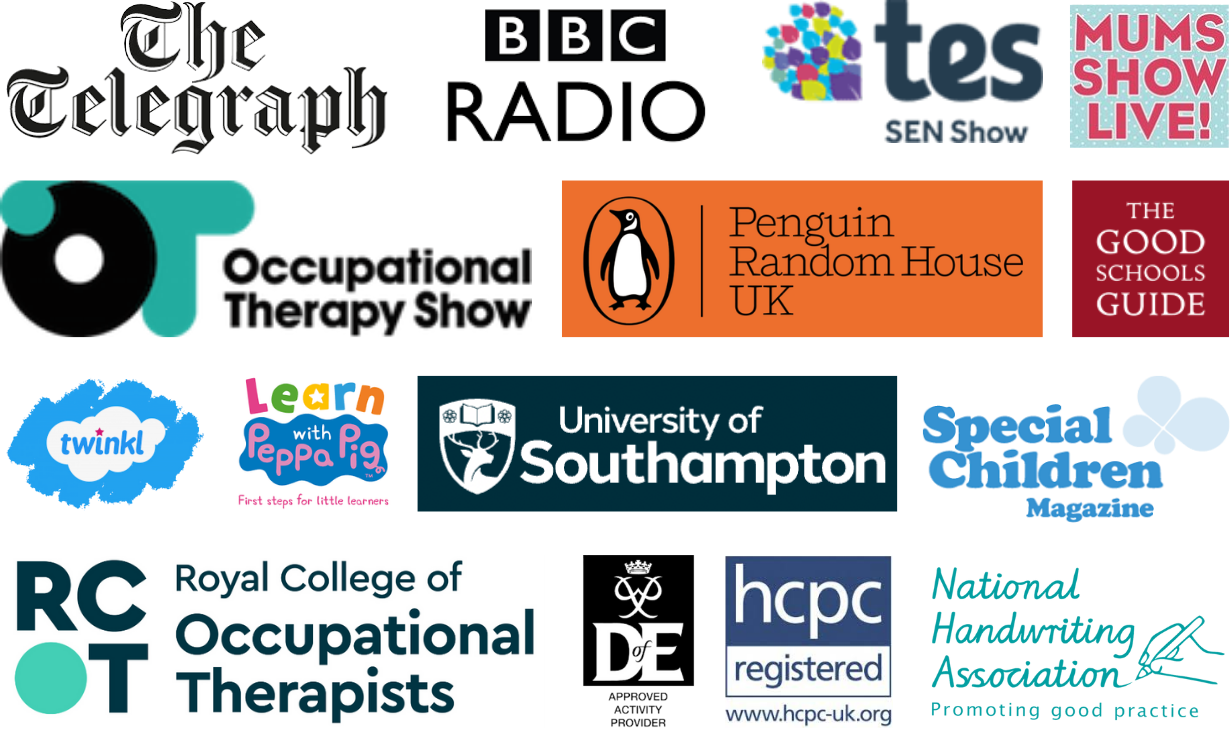Hypermobility and how you can help
If you saw a child with hypermobility would you know what it is or what you can do to help? This article explains hypermobility in children and its impact to handwriting. It will also give you suggested ideas of how you can help develop hand skills. Specifically looking at a nursery or early years setting.
What is hypermobility?
Hypermobility is a medical term used to describe the movement of human joints which often go beyond what is considered to be a normal range. Some people refer to joint hypermobility as being ‘double jointed fingers‘ or having ‘loose joints’.
This is not an unusual medical condition. As many as 30% of the population have this condition. Sometimes having hypermobility can be an advantage. For instance, athletes, gymnasts, and dancers can often find that their extra range of movement is beneficial. For some, it can cause joint and ligament injuries, pain, and tightness when doing everyday activities.
What causes hypermobility?
The cause of hypermobility is thought to be linked to a protein found throughout the body called collagen. Collagen is in the skin and in the ligaments. It is also found in the tough bands of connective-tissue that link the bones together around the joint. Changes to the collagen can cause hypermobility.
Hypermobility is more common in childhood and adolescence. It is more usual in females. It is also more frequent within Asian and Afro-Caribbean communities. As it is a hereditary condition often mums and dads can have the same range of movement as their children.
A simple hypermobility test you can do at home
 To notice if a child has hypermobility in their fingertips ask them to press their fingers down on a table.
To notice if a child has hypermobility in their fingertips ask them to press their fingers down on a table.
If you notice the joints just above the fingertips, called a DIP joint (distal interphalangeal joints), having more movement than another child, it is possible that person has hypermobility.
Hypermobility and handwriting in children
The reason why hypermobility has an impact at school is that this child has to hold an object tighter than another to be able to control their hand movements. If you imagine asking a child with hypermobility to write their name and address. This child may tire quicker because the muscles in their hand are working harder to hold the pencil. They may even say their hand is hurting. This child’s muscles may also be working harder to keep them in an upright sitting position. Sometimes children with hypermobility need to fidget to prevent their joints from feeling stiff or painful.
You can learn more about hypermobility (double jointed fingers)on the NHS website.
How does play help handwriting skills in a nursery setting?
By the age of 15 months, all children should have developed the basic hand skills needed for handwriting. These are an ability to grasp and release, manipulation skills and tool use. Grasp and release skills are their ability to pick up and put down objects with control. Manipulation skills are the ability to use the thumb, index and middle finger to pick up and move small objects from the palm of the hand to the edge of the fingers. Tool use is that ability to hold a pencil, paintbrush or drumstick in the hand and to make an action.
The difference between how a three-year-old or four-year-old uses their hands is by the opportunity they have to develop their hand skills during play. A three-year-old would be expected to be able to build a tower of nine cubes thread large beads on the shoelace and hold a pencil in their preferred hand. A four-year-old would be expected to build a tower of 10 cubes, thread small beads and hold a pencil near the pen point so that they can draw a recognisable man or a house.
How can I help the child with hypermobility in my nursery setting?
Later on in school life being good at handwriting is not all about having handwriting strength however for the child with hypermobility spending time on developing muscle control is essential. This is because our hands do not fully develop until we are around the age of six years old. What we need to be able to do is to increase the hand control around the base of the thumb. There are three muscles around the thumb which is called the ‘thenar eminence’. Playing is a great way to develop this muscle control.
If we look at the three essential skills that a child already has within a nursery setting, that of grasp and release, manipulation skills and tool use. There are some activities that we can ask children to be doing to help increase the control around the thumb. This, in turn, will help become ready for handwriting.
1. Grasp and release activities
Grasp and release activities involve having the child grasp an object and release the object. This helps coordinate the small muscles in the hand.
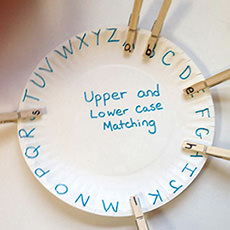
Match the clothes peg
I personally am a great fan of using clothes pegs for grasp and release activities. Clothes pegs can now come in a variety of sizes and materials. Sometimes a plastic peg is more difficult to open than a traditional wooden peg.
To make the activity more interesting you could have a selection of pegs with letters or numbers on. The child should then match a peg to the alphabet or to spell out their name.
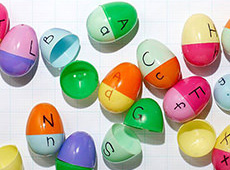
Egg alphabet game
Another idea is to have a series of containers that the child must open and close.
I like the idea of these eggs where the child has to match the upper and lower case letters together. You could use empty kinder eggs for a cheap, fun egg alphabet game.
2. Manipulation activities
Manipulation activities involve having the child move and position objects with one hand and without using the other hand.

Best achieved with something small
In-hand manipulation activities are best completed when a child has to hold and move something small within their hand. This could be picking up small buttons and lining them along the pattern that matches handwriting patterns.
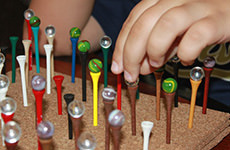
Balance marbles on golf tees
Alternatively, they could be trying to balance marbles on golf tees that are placed in playdough for stability.
These manipulation activities are also good for developing the child’s hand-eye coordination.
3.Tool Use
Tool use develops hand strength, hand-eye coordination skills and hand control skills.
All of these are skills needed for handwriting, but can be huge amounts of fun!
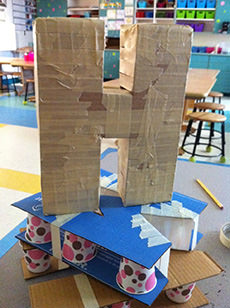
Papier-mâché
I particularly like the idea of using papier-mâché to help develop these skills. Tearing the paper and gluing it develops hand strength, hand-eye coordination skills and hand control skills. By gluing using a paintbrush this helps them get used to holding an object in their hand, a skill needed for handwriting.
You could be making a papier-mâché hot air balloon, ice cream or even your own letters (which of course will help with letter recognition). There’s a great how-to on Apex Art.
Hypermobility is is not something to worry about
The key tip to remember about hypermobility is that it is not something to worry about. It is part of who that person is. We can give them opportunities to develop muscle strength and control through play. If you remain concerned and feel that hypermobility is impacting on how a child is writing then do seek the advice of an occupational therapist. You can contact me for advice on my Contact page, or you can hire a handwriting tutor online.









